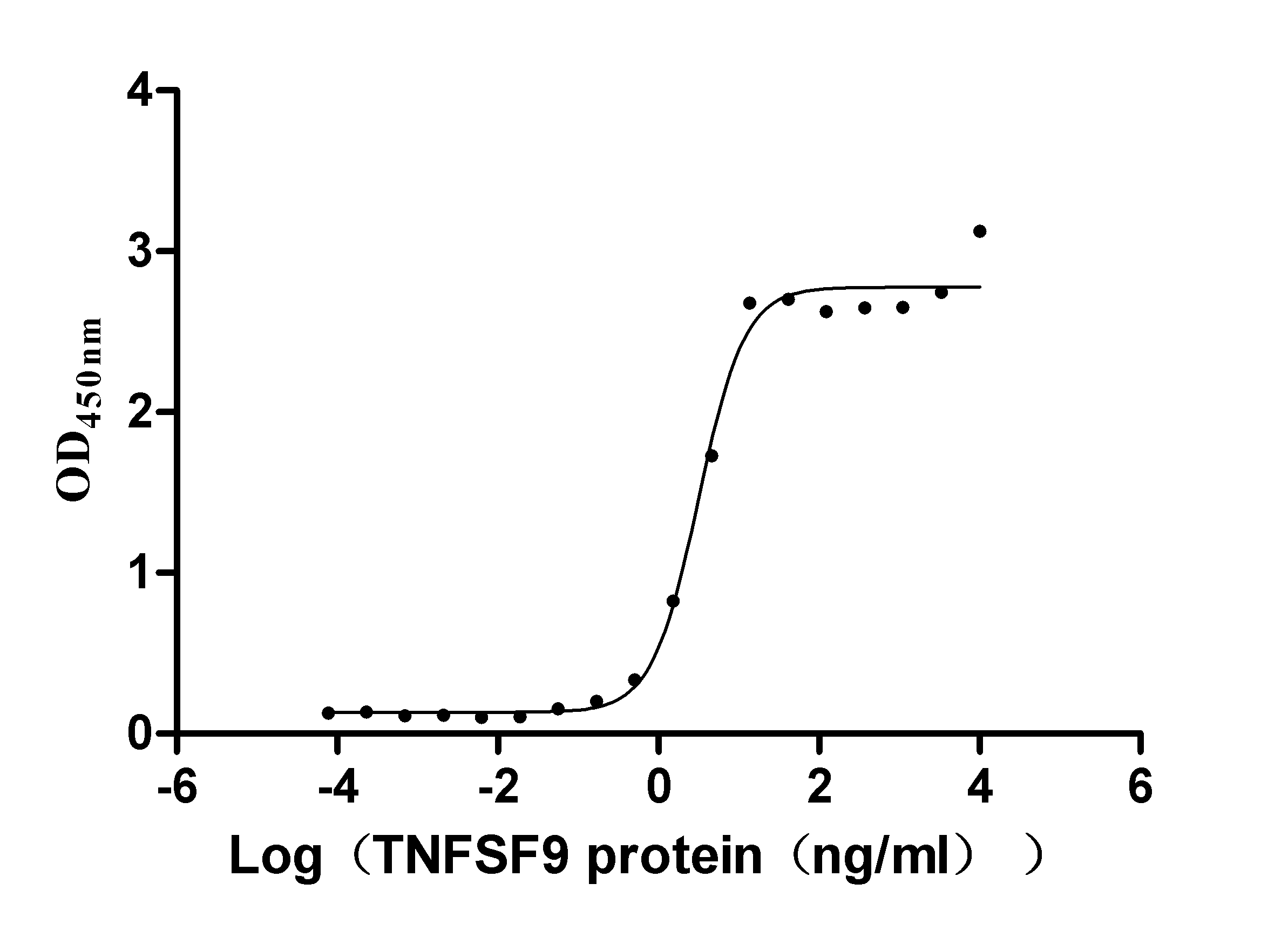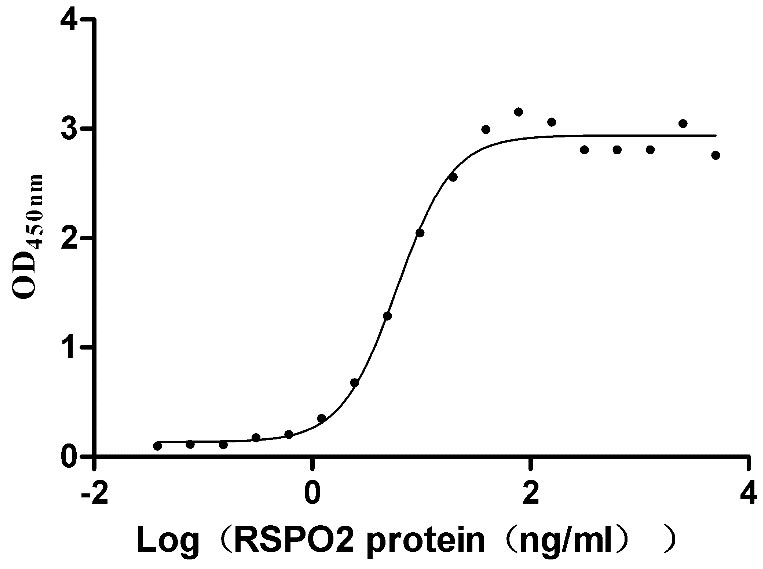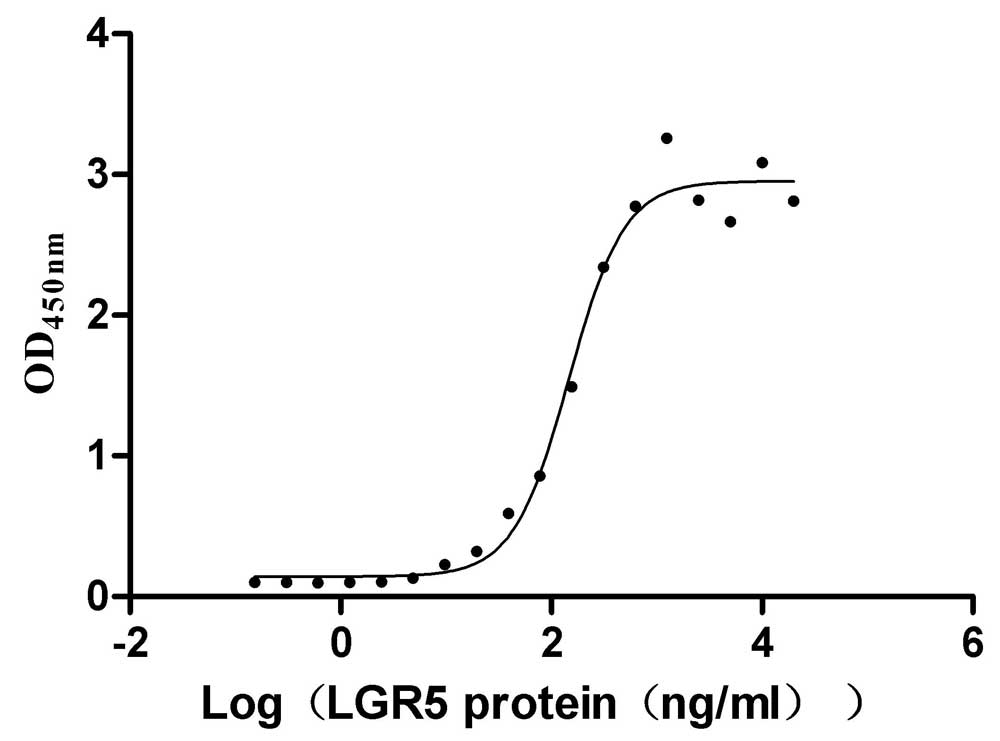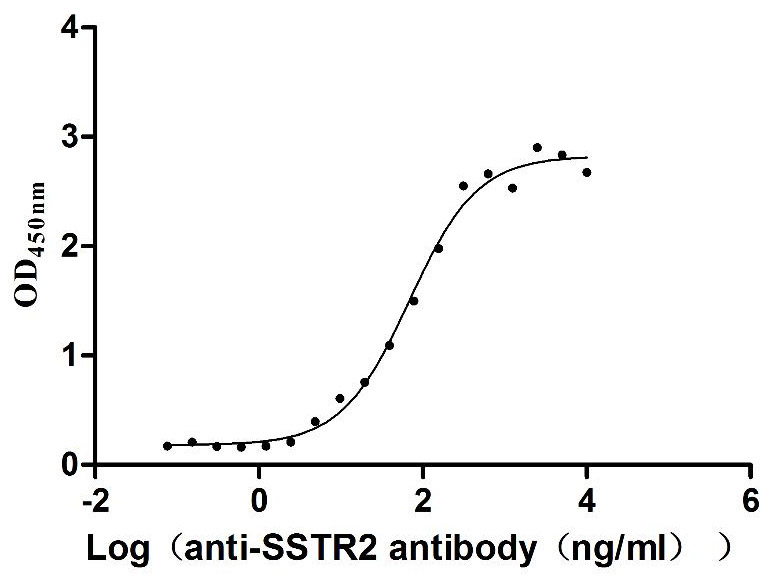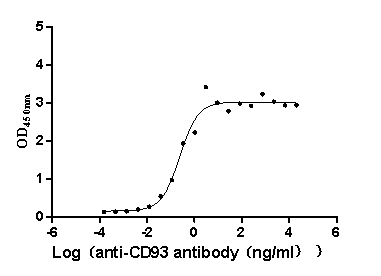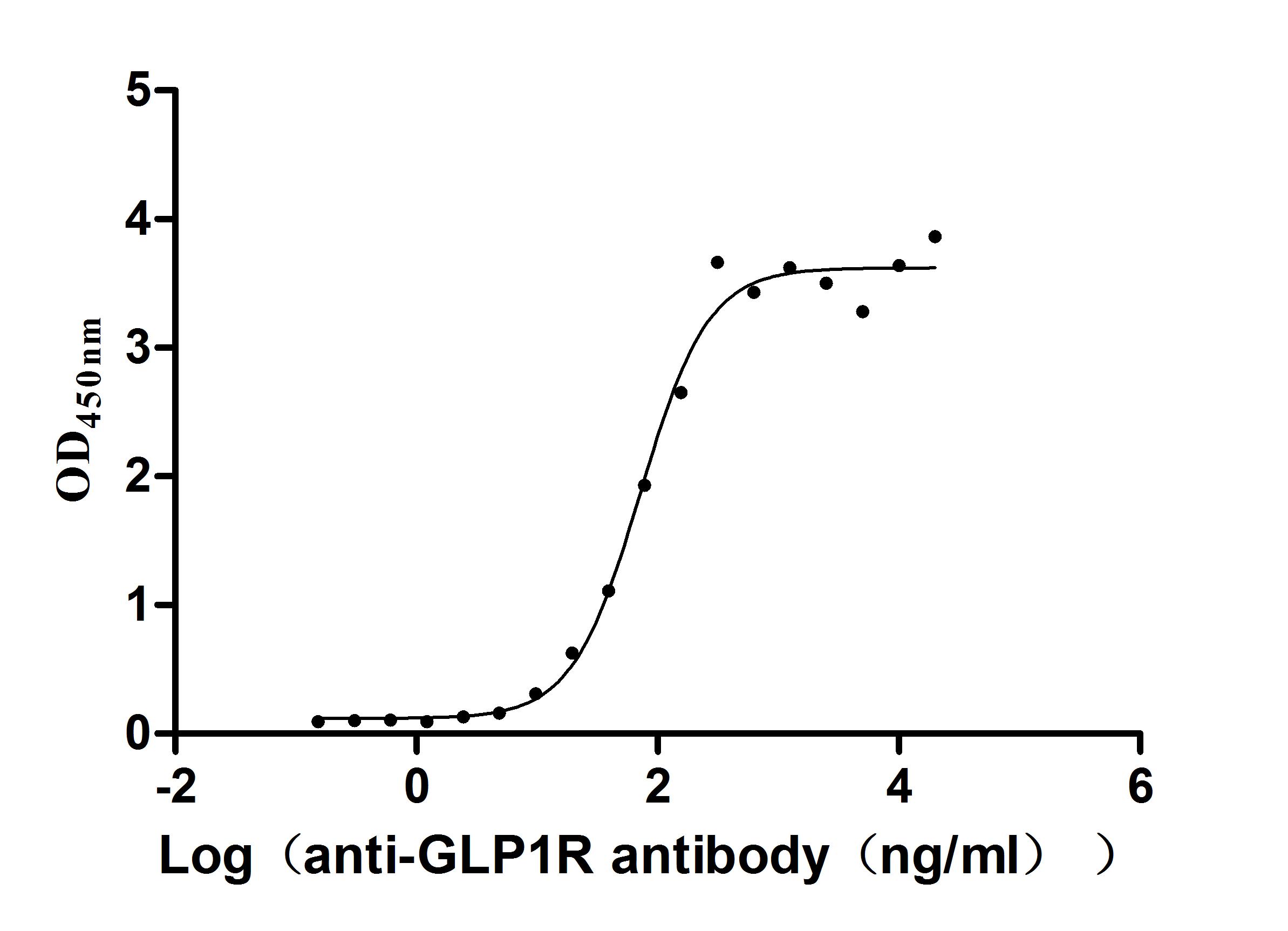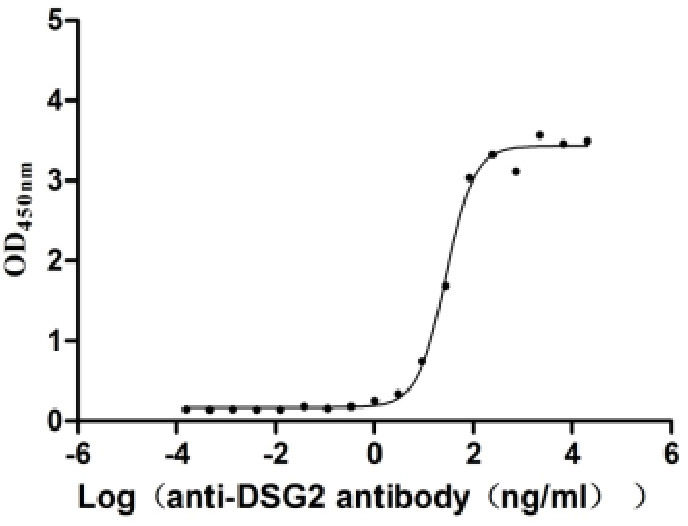Recombinant Mouse Protein ripply2 (Ripply2)
-
中文名稱(chēng):小鼠Ripply2重組蛋白
-
貨號(hào):CSB-YP648929MO
-
規(guī)格:
-
來(lái)源:Yeast
-
其他:
-
中文名稱(chēng):小鼠Ripply2重組蛋白
-
貨號(hào):CSB-EP648929MO
-
規(guī)格:
-
來(lái)源:E.coli
-
其他:
-
中文名稱(chēng):小鼠Ripply2重組蛋白
-
貨號(hào):CSB-EP648929MO-B
-
規(guī)格:
-
來(lái)源:E.coli
-
共軛:Avi-tag Biotinylated
E. coli biotin ligase (BirA) is highly specific in covalently attaching biotin to the 15 amino acid AviTag peptide. This recombinant protein was biotinylated in vivo by AviTag-BirA technology, which method is BriA catalyzes amide linkage between the biotin and the specific lysine of the AviTag.
-
其他:
-
中文名稱(chēng):小鼠Ripply2重組蛋白
-
貨號(hào):CSB-BP648929MO
-
規(guī)格:
-
來(lái)源:Baculovirus
-
其他:
-
中文名稱(chēng):小鼠Ripply2重組蛋白
-
貨號(hào):CSB-MP648929MO
-
規(guī)格:
-
來(lái)源:Mammalian cell
-
其他:
產(chǎn)品詳情
-
純度:>85% (SDS-PAGE)
-
基因名:Ripply2
-
Uniprot No.:
-
別名:Ripply2; Protein ripply2
-
種屬:Mus musculus (Mouse)
-
蛋白長(zhǎng)度:full length protein
-
表達(dá)區(qū)域:1-128
-
氨基酸序列MDTTESAESA HNPARPPSRS RCPPSAQPGS EGFWRPWVRT PGEKEKRTGP RAAEALPSGP GMAEASGKLL QYQHPVRLFW PKSKCYDYLY QEAETLLKNF PIQATISFYE DSDSEDEIEG LACENQSN
-
蛋白標(biāo)簽:Tag?type?will?be?determined?during?the?manufacturing?process.
The tag type will be determined during production process. If you have specified tag type, please tell us and we will develop the specified tag preferentially. -
產(chǎn)品提供形式:Lyophilized powder
Note: We will preferentially ship the format that we have in stock, however, if you have any special requirement for the format, please remark your requirement when placing the order, we will prepare according to your demand. -
復(fù)溶:We recommend that this vial be briefly centrifuged prior to opening to bring the contents to the bottom. Please reconstitute protein in deionized sterile water to a concentration of 0.1-1.0 mg/mL.We recommend to add 5-50% of glycerol (final concentration) and aliquot for long-term storage at -20℃/-80℃. Our default final concentration of glycerol is 50%. Customers could use it as reference.
-
儲(chǔ)存條件:Store at -20°C/-80°C upon receipt, aliquoting is necessary for mutiple use. Avoid repeated freeze-thaw cycles.
-
保質(zhì)期:The shelf life is related to many factors, storage state, buffer ingredients, storage temperature and the stability of the protein itself.
Generally, the shelf life of liquid form is 6 months at -20°C/-80°C. The shelf life of lyophilized form is 12 months at -20°C/-80°C. -
貨期:Delivery time may differ from different purchasing way or location, please kindly consult your local distributors for specific delivery time.Note: All of our proteins are default shipped with normal blue ice packs, if you request to ship with dry ice, please communicate with us in advance and extra fees will be charged.
-
注意事項(xiàng):Repeated freezing and thawing is not recommended. Store working aliquots at 4°C for up to one week.
-
Datasheet :Please contact us to get it.
靶點(diǎn)詳情
-
功能:Plays a role in somitogenesis. Required for somite segregation and establishment of rostrocaudal polarity in somites.
-
基因功能參考文獻(xiàn):
- Compound heterozygous mutations in RIPPLY2 are associated with segmentation defects of the vertebrae, a new gene for this condition. PMID: 25343988
- Ripply2 represses Tbx6 in a Mesp2-independent manner, which contributes to the accurate segmental border formation. PMID: 25641698
- Ripply2-Mesp2 negative-feedback loop is essential for the periodic generation of the rostro-caudal polarity within a somite. PMID: 17360776
- conclusion was supported by analyses of Mesp2 KO and Ripply1/2 double KO embryos lacking rostral and caudal properties, respectively PMID: 23727513
- Rostro-caudal pattern is established by dynamic interaction of Notch activity with two Mesp2 domains, which are defined in successive segmentation cycles by Notch, Tbx6 and Ripply1/2. PMID: 20346937
- Defects in segmentation of the axial skeleton were observed in the ripply2 homozygous mutant mice. PMID: 17531978
- findings show that Ripply2 is expressed in the anterior presomitic mesoderm and that it lies downstream of Wnt3a; data are consistent with Ripply2 functioning as a segment boundary determination gene during mammalian embryogenesis PMID: 17937396
- Compares Ripply proteins in zebrafish, mouse, human, and amphioxus. PMID: 16326386
顯示更多
收起更多
-
亞細(xì)胞定位:Nucleus.
-
蛋白家族:Ripply family
-
組織特異性:Expressed in the embryonic anterior presomitic mesoderm. First expressed in S-I at E8.5, where expression is maintained until E13.5, with an additional stripe of expression sometimes seen in the rostral part of S0 and S-I.
-
數(shù)據(jù)庫(kù)鏈接:
Most popular with customers
-
Recombinant Human Tumor necrosis factor ligand superfamily member 9 (TNFSF9), partial (Active)
Express system: Mammalian cell
Species: Homo sapiens (Human)
-
Recombinant Human E3 ubiquitin-protein ligase ZNRF3 (ZNRF3), partial (Active)
Express system: Mammalian cell
Species: Homo sapiens (Human)
-
Recombinant Human R-spondin-1 (RSPO1), partial (Active)
Express system: Mammalian cell
Species: Homo sapiens (Human)
-
Recombinant Rat Intestinal-type alkaline phosphatase 1 (Alpi) (Active)
Express system: Mammalian cell
Species: Rattus norvegicus (Rat)
-
Recombinant Human Somatostatin receptor type 2 (SSTR2)-VLPs (Active)
Express system: Mammalian cell
Species: Homo sapiens (Human)
-
Recombinant Macaca fascicularis CD93 molecule (CD93), partial (Active)
Express system: Mammalian cell
Species: Macaca fascicularis (Crab-eating macaque) (Cynomolgus monkey)
-
Recombinant Human Glucagon-like peptide 1 receptor (GLP1R), partial (Active)
Express system: Mammalian cell
Species: Homo sapiens (Human)
-
Recombinant Human Desmoglein-2 (DSG2), partial (Active)
Express system: Mammalian cell
Species: Homo sapiens (Human)


